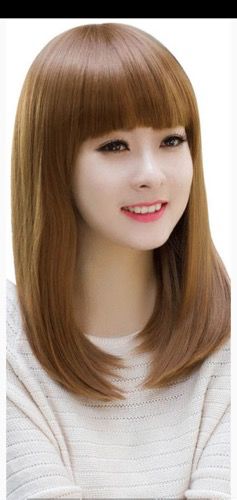Android屏幕适配(三)--刘海屏适配
Android 官方9.0刘海屏适配策略
- 如果非全屏模式(有状态栏),则app不受刘海屏的影响,刘海屏的高就是状态栏的高
- 如果全屏模式,app未适配刘海屏,系统会对界面做特殊处理,竖屏向下移动,横屏向右移动
我们先模拟下全屏没有适配刘海屏的效果
layoutInDisplayCutoutMode可设置的值:
LAYOUT_IN_DISPLAY_CUTOUT_MODE_DEFAULT:默认情况下,全屏窗口不会使用到刘海区域,非全屏窗口可正常使用刘海区域
LAYOUT_IN_DISPLAY_CUTOUT_MODE_NEVER:窗口不允许和刘海屏重叠
LAYOUT_IN_DISPLAY_CUTOUT_MODE_SHORT_EDGES:设置沉浸式
还有一些控件不需要被刘海挡着怎么处理?
解决方案:避开刘海屏
一、获取刘海屏高度,通常情况下刘海高度不会超过状态栏高度
//通常情况下,刘海的高就是状态栏的高
public int heightForDisplayCutout(){
int resID = getResources().getIdentifier("status_bar_height", "dimen", "android");
if (resID > 0){
return getResources().getDimensionPixelSize(resID);
}
return 0;
}
二、选择一:设置某个控件的上边距来避开刘海
三、选择二:设置父容器的内边距来避开刘海。
刘海屏针对不同手机需要做不同的适配
各个手机都提供相应的方案:
其他手机厂商(华为,小米,oppo vivo)适配
华为:https://devcenter-test.huawei.com/consumer/cn/devservice/doc/50114
小米:https://dev.mi.com/console/doc/detail?pId=1293
Oppo:https://open.oppomobile.com/service/message/detail?id=61876
Vivo:https://dev.vivo.com.cn/documentCenter/doc/103
华为与vivo适配刘海的工具类
public class Utils {
/**
* 华为是否刘海
* @param context
* @return
*/
public static boolean hasNotchInScreen(Context context) {
boolean ret = false;
try {
ClassLoader cl = context.getClassLoader();
Class HwNotchSizeUtil = cl.loadClass("com.huawei.android.util.HwNotchSizeUtil");
Method get = HwNotchSizeUtil.getMethod("hasNotchInScreen");
ret = (boolean) get.invoke(HwNotchSizeUtil);
} catch (ClassNotFoundException e) {
Log.e("test", "hasNotchInScreen ClassNotFoundException");
} catch (NoSuchMethodException e) {
Log.e("test", "hasNotchInScreen NoSuchMethodException");
} catch (Exception e) {
Log.e("test", "hasNotchInScreen Exception");
}
return ret;
}
/**
* 华为获取刘海尺寸:width、height,int[0]值为刘海宽度 int[1]值为刘海高度。
* @param context
* @return
*/
public static int[] getNotchSize(Context context) {
int[] ret = new int[]{0, 0};
try {
ClassLoader cl = context.getClassLoader();
Class HwNotchSizeUtil = cl.loadClass("com.huawei.android.util.HwNotchSizeUtil");
Method get = HwNotchSizeUtil.getMethod("getNotchSize");
ret = (int[]) get.invoke(HwNotchSizeUtil);
} catch (ClassNotFoundException e) {
Log.e("test", "getNotchSize ClassNotFoundException");
} catch (NoSuchMethodException e) {
Log.e("test", "getNotchSize NoSuchMethodException");
} catch (Exception e) {
Log.e("test", "getNotchSize Exception");
}
return ret;
}
/**
* 华为设置使用刘海区域
* @param window
*/
public static void setFullScreenWindowLayoutInDisplayCutout(Window window) {
if (window == null) {
return;
}
try {
WindowManager.LayoutParams layoutParams = window.getAttributes();
Class layoutParamsExCls = Class.forName("com.huawei.android.view.LayoutParamsEx");
Constructor con=layoutParamsExCls.getConstructor(WindowManager.LayoutParams.class);
Object layoutParamsExObj=con.newInstance(layoutParams);
Method method=layoutParamsExCls.getMethod("addHwFlags", int.class);
method.invoke(layoutParamsExObj, FLAG_NOTCH_SUPPORT);
} catch (Exception e) {
Log.e("test", "other Exception");
}
}
/*刘海屏全屏显示FLAG*/
public static final int FLAG_NOTCH_SUPPORT = 0x00010000;
/**
* 设置应用窗口在华为刘海屏手机不使用刘海
*
* @param window 应用页面window对象
*/
public static void setNotFullScreenWindowLayoutInDisplayCutout(Window window) {
if (window == null) {
return;
}
try {
WindowManager.LayoutParams layoutParams = window.getAttributes();
Class layoutParamsExCls = Class.forName("com.huawei.android.view.LayoutParamsEx");
Constructor con = layoutParamsExCls.getConstructor(WindowManager.LayoutParams.class);
Object layoutParamsExObj = con.newInstance(layoutParams);
Method method = layoutParamsExCls.getMethod("clearHwFlags", int.class);
method.invoke(layoutParamsExObj, FLAG_NOTCH_SUPPORT);
} catch (Exception e) {
Log.e("test", "hw clear notch screen flag api error");
}
}
/*********
* 1、声明全屏显示。
*
* 2、适配沉浸式状态栏,避免状态栏部分显示应用具体内容。
*
* 3、如果应用可横排显示,避免应用两侧的重要内容被遮挡。
*/
/********************
* 判断该 OPPO 手机是否为刘海屏手机
* @param context
* @return
*/
public static boolean hasNotchInOppo(Context context) {
return context.getPackageManager().hasSystemFeature("com.oppo.feature.screen.heteromorphism");
}
/**
* 刘海高度和状态栏的高度是一致的
* @param context
* @return
*/
public static int getStatusBarHeight(Context context) {
int resId = context.getResources().getIdentifier("status_bar_height", "dimen", "android");
if (resId > 0){
return context.getResources().getDimensionPixelSize(resId);
}
return 0;
}
/**
* Vivo判断是否有刘海, Vivo的刘海高度小于等于状态栏高度
*/
public static final int VIVO_NOTCH = 0x00000020;//是否有刘海
public static final int VIVO_FILLET = 0x00000008;//是否有圆角
public static boolean hasNotchAtVivo(Context context) {
boolean ret = false;
try {
ClassLoader classLoader = context.getClassLoader();
Class FtFeature = classLoader.loadClass("android.util.FtFeature");
Method method = FtFeature.getMethod("isFeatureSupport", int.class);
ret = (boolean) method.invoke(FtFeature, VIVO_NOTCH);
} catch (ClassNotFoundException e) {
Log.e("Notch", "hasNotchAtVivo ClassNotFoundException");
} catch (NoSuchMethodException e) {
Log.e("Notch", "hasNotchAtVivo NoSuchMethodException");
} catch (Exception e) {
Log.e("Notch", "hasNotchAtVivo Exception");
} finally {
return ret;
}
}
}
